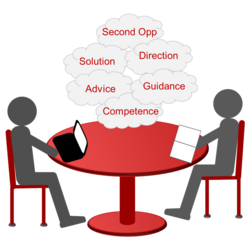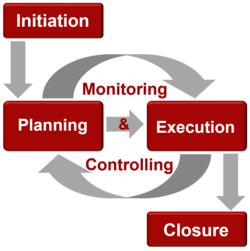Decision Support & Proof-of-Value

Enterprise Customers are facing challenging times. The right IT decision is necessary to survive in a competitive world.
Count on the Expert Know How of APILANi for your Management Decisions.
⇒ APILANi is Your #1 Alliance Partner for Management Decision Support & Proof-of-Value.
Decision Support

A specific IT Vendor or a specific IT Solution offering ist "mainstream" and suitable for most customers, but not for you. How do you know? You can learn it the hard way and lose money while making the experience or you can get advice from an IT expert.
You would like to know whether topics like outsourcing or insourcing, public vs. private vs. hybrid vs. multi cloud, Blockchain or AI help your company to grow and therefore you should invest money and resources.
You need a second opinion on your IT decision?
We accompany you on your journey to Proof-of-Value with concrete actions! 👉📧
Objective | Todos | Outcome |
|---|---|---|
1. Strategic Alignment | ➜ ensures consistency with corporate, IT, and digital strategies | 📌 Does the IT solution support key business goals and core processes? |
2. Requirements & Use Cases | ➜ Clear definition of functional and non-functional requirements | 📌 Business process needs, compliance, security, scalability |
3. Data-Based Decision Foundation | ➜ Use of KPIs, monitoring data, benchmarks, and cost analyses | 📌 TCO (Total Cost of Ownership), ROI calculations, performance reports, benchmarking |
4. Architecture & Integration Assessment | ➜ Evaluation of compatibility with the existing IT/OT architecture | 📌 ERP integration, cloud connection, API compatibility |
5. Risk & Security Analysis | ➜ Assessment of technical, operational, and regulatory risks | 📌 Data protection, resilience, supplier risk |
6. Economic Evaluation (Business Case) | ➜ Comparison of costs, benefits, and alternatives | 📌 Investment calculation, scenario analysis, break-even point |
7. Technology Assessment | ➜ Evaluation of maturity, scalability, and vendor dependency | 📌 Open source vs. proprietary, innovation potential, support availability |
8. Stakeholder & Governance Model | ➜ Definition of roles, responsibilities, and decision processes | 📌 IT governance, RACI model, steering committee |
9. Compliance & Sustainability | ➜ Consideration of standards, regulations, and ESG criteria | 📌 ISO 27001, EU AI Act, energy efficiency of the solution |
10. Scenarios & Simulations | ➜ Comparison of alternative solution paths under different assumptions | 📌 What-if analyses, pilot projects, proof of concept |
11. Knowledge Management & Documentation | ➜ Capturing experience and decision history for transparency | 📌 Lessons learned, decision matrix, project documentation |
12. Tool Support for Decision Making | ➜ Use of BI, AI, or expert systems for decision assistance | 📌 Power BI, Tableau, decision engines, ML-based recommendation tools |
⇒ With Decision Support from APILANi you will be safe about your IT strategy and can act more budget-friendly and cost-effective. 👉📧
Proof of Value (PoV)
You doubt about the added value of an IT Solution offered by your IT Vendor or an external consultancy firm and want to proof what fits best to your IT directions? Based on our Evaluation and Implementation Criteria the product offering of your IT Vendor will be proved concerning your IT requirements reflecting your current business and future growth.
Examples of PoV in IT Projects:
- IT Operations: 30% reduction in downtime through automated monitoring
- Software Deployment: 40% shorter release cycles enabled by a CI/CD platform
- Data Analytics: Faster decision-making enabled by real-time data visualization
- Security: Reduction in security incidents through automated threat detection

PoV Checklist:
✔️ Objectives and KPIs clearly defined
✔️ Baseline data collected
✔️ Pilot environment set up
✔️ Data measured and documented
✔️ Business value quantified
✔️ Stakeholders validated results
✔️ Decision report prepared
Difference between PoC and PoV:
| Criterion | PoC | PoV |
|---|---|---|
| Focus | Technical feasibility | Business value |
| Target group | IT teams, developers | Management, decision-makers |
| Outcome | Does it work technically? | Is it worth it financially? |
| Success criterion | Technical validation | Economic or business impact |
⇒ APILANi helps you with Software Evaluation and Proof-of-Value projects. 👉📧
Projects & Execution

IT requirements supporting your current business will determine your companies' future growth. Implement IT projects in a suitable time.
You want to implement your IT projects on time and within budget?
We accompany you on your journey to reliably implement IT projects with concrete actions! 👉📧
Objective | Todos | Outcome |
|---|---|---|
1. Initiation / Conceptdefine business need and project goals | ➡️ identify problem or opportunity | ✅ Project Charter |
2. Planning / Designestablish detailed roadmap and technical design | ➡️ define requirements (functional / non-functional) | ✅ Project Plan |
3. Implementation / Developmentbuild and configure the system according to the design | ➡️ develop code and system components | ✅ Developed Modules |
4. Testing / Quality Assurancevalidate that the solution meets requirements | ➡️ conduct system, user acceptance (UAT) and performance tests | ✅ Test Plan & Reports |
5. Deployment / Go-Livedeliver and operationalize the system | ➡️ execute deployment plan | ✅ Live System |
6. Monitoring / Operationensure stable performance and continuous improvement | ➡️ monitor performance and incidents | ✅ Maintenance Logs |
7. Evaluation / Closurereview success and document lessons learned | ➡️ evaluate KPIs (time, cost, quality, satisfaction) | ✅ Project Closure Report |